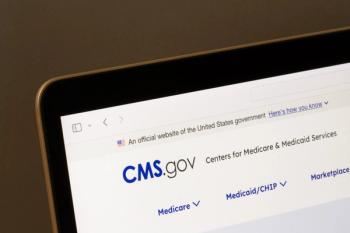
- Drug Topics July/August 2023
- Volume 167
- Issue 07
Pharmacists Role in Opioid Stewardship, Perioperative Main Management Crucial
Pharmacists play a crucial role in opioid stewardship and pain management programs. Two posters presented at the American Society of Health-System Pharmacists (ASHP) 2023 Summer Meetings and Exhibit, held June 10 to 14 in Baltimore, Maryland, shared findings around these pharmacy practice domains.
Although opioid stewardship programs are intended to promote safe, appropriate prescribing of opioids, stewardship metrics are less defined in the oncology setting, “often extrapolated from non-cancer opioid prescribing guidelines,” according to researcher Loredana D. Ardeljan, PharmD, BCPS, an opioid stewardship pharmacist at the Dana Farber Cancer Institute in Boston, Massachusetts, and colleagues.1 These programs rely on metrics including average oral morphine equivalent (OME) per day and total prescriptions written; however, oncology patients can and so require higher opioid doses due to complex symptoms.
As part of a new opioid stewardship program, researchers evaluated the metrics used to guide opioid stewardship, such as state prescribing regulations, guidelines, and the available literature. Data from opioid prescriptions written between January and December 2022 were reviewed to assess baseline prescription metrics.
In total, investigators identified 36,800 prescriptions written by 495 prescribers during the study tie frame. Among these prescriptions, 31% were long-acting agents, such as buprenorphine and methadone. Average OME per day was 88, excluding the 2 long-acting drugs. Additional identified metrics included signed opioid agreements, naloxone co-prescription, the presence of high-risk medications such as muscle relaxants, benzodiazepines, hypnotics, or barbituates, present in 28%, 14% and 36% of all prescriptions, respectively.
“There are several process metrics beyond OME [per] day and quantity of prescriptions that opioid stewardship programs can use to assess prescribing practices,” Ardeljan concluded. “These metrics can be used to identify specific interventions to improve safe prescribing in the oncology setting.”
Outside of the oncology space, Terri L. Jorgenson, RPh, BCPS, national program manager, clinical pharmacy practice, at the Veterans Health Administration, and colleagues launched a multi-facility pilot project targeting opioid risk mitigation and surgical team satisfaction after the VA Pharmacy Benefit Management (PBM) Clinical Pharmacy Practice Office (CPPO) “recognized the important role of pharmacist practitioners in improving opioid safety post-operatively.”2
A quality improvement project utilizing clinical pharmacist practitioners for post-operative pain management recommendations and opioid risk mitigation was implemented around orthopedic surgery. A secondary goal of this project was measuring surgical team satisfaction with the service.
Between August 2021 and June 2022, the CPPO identified 8 participating sites, where virtual webinars were held, focusing on project standardization and implementation at all facilities. Data collection completed in October 2022.
Clinical pharmacist practitioners completed 1290 preoperative opioid risk interventions for 289 patients; these interventions included overdose education (88.9% of patients), naloxone (63.3%), PMDP queries (97.2%), and suicide risk assessment (83%). Pharmacists also provided 59 preoperative pain management interventions, including 24 pharmacotherapy and 35 nonpharmacologic interventions. Postoperative pain medication management recommendations were provided by pharmacists for 97.9% of patients.
Postoperatively, pharmacists completed overdose education and suicide risk assessments for 83% of patients, as well as unused opioid disposal education for 78.5% of patients. In total, they provided 134 nonpharmacologic, 96 opioid, and 74 nonopioid pain management interventions in the postoperative setting. Average patient pain scores were 5.1 preoperatively and 3.7 at discharge.
During the postoperative period, 49.3% of medication management recommendations made during preoperative evaluation were fully followed. A total of 23 orthopedic team surveys were completed, with 82.6% of respondents indicating that the clinical practice pharmacist provides valuable pain management recommendations, and 87% reporting that the integration of the pain clinical practice pharmacist “makes them more comfortable with post-pain management planning.” Ultimately, 96% of respondents said that a pain clinical practice pharmacist “should be a permanent member of the ortho surgery team.”
“The integration of a [clinical practice pharmacist] for perioperative pain management in orthopedic surgery resulted in consistent opioid risk review and mitigation and medication management,” the researchers concluded. “Ortho team survey respondents reported high satisfaction rates” and additional positions for clinical practice pharmacists were justified.
References
Ardeljan LD. Beyond OME: Identifying opioid prescribing practice metrics at a cancer center. Presented at: American Society of Health-System Pharmacists Summer Meetings and Exhibition; June 10-14, 2023; Baltimore, MD. Poster 31-M.
Jorgenson TL. Perioperative pain management: Leveraging clinical pharmacist practitioners to improve opioid safety. Presented at: American Society of Health-System Pharmacists Summer Meetings and Exhibition; June 10-14, 2023; Baltimore, MD. Poster 32-M.
Articles in this issue
about 2 years ago
FDA Approves Sotagliflozin for Treatment of Heart Failureabout 2 years ago
New Treatment Approved for Menopausal Hot Flashesabout 2 years ago
Topical Analgesics: A New Frontier for First-Line Pain Managementabout 2 years ago
Inside Insomnia: Pharmacist Management of Sleep Disordersabout 2 years ago
Here’s a Tip: More Money Is the Solutionabout 2 years ago
2023-2024 Flu Season: What to Expectover 2 years ago
Utilizing AI for Medication Managementover 2 years ago
Pharmacists Applaud New Bionic Pancreas for Type 1 Diabetesover 2 years ago
ASHP: Adalimumab Biosimilar Pipeline ReviewNewsletter
Pharmacy practice is always changing. Stay ahead of the curve with the Drug Topics newsletter and get the latest drug information, industry trends, and patient care tips.





















































































































































